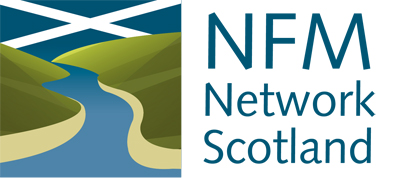The work aimed to create a mosaic of river and floodplain habitats by allowing active river processes to develop a multi-threaded (anabranched) system together with floodplain wet woodland features. Prior to the work, the burn was a degraded perched watercourse and flowed around the edge of a field, with dredged spoil deposits used to build the flood embankments, thus disconnecting the burn from its floodplain area.
Two breaches of the existing embankments were created to allow flow to spill out across the floodplain. Their locations were selected using LiDAR imagery to identify low areas of land suitable for the course of the temporary 'basic' channel, which was constructed to ensure that there was no interruption in migratory fish passage. The overall aspiration was then to allow natural processes to develop a multi-thread watercourse. Initially the upstream breach in the bank was set to maintain 80% of the lower flows in the exisitng channel, and protected using thirty tonnes of locally sourced granite placed within the breach opening. This was to ensure that species within the existing channel could continue to use the available habitat whilst the new watercourse continued to develop.
A low embankment was constructed parallel to the new channel close to the site boundary. This was to protect adjacent fields outside the area of burn management works from flooding. Material was won from digging a small ditch which avoided the need to import fill over very soft ground. Tree planting was undertaken as part of the scheme to encourage the development of wet woodland. Only tree species native to eastern Scotland and of local provenance were selected for planting including: common alder (25%), silver birch (25%), sessile oak (25%), rowan (15%) and goat willow (10%). Whips between 0.45m and 0.6m in length were planted, as these tend to establish well and grow more quickly than more mature specimens. The whips were planted in clumps of three to five of the same species, spaced at 2m centres, with a planting density to allow for some failures. Mesh guards were not installed to protect the whips since there was a risk they would be washed off during a flood event and could pose a hazard to wildlife. Additionally, there was a concern that any mesh would have introduced man-made debris into the natural environment downstream.

